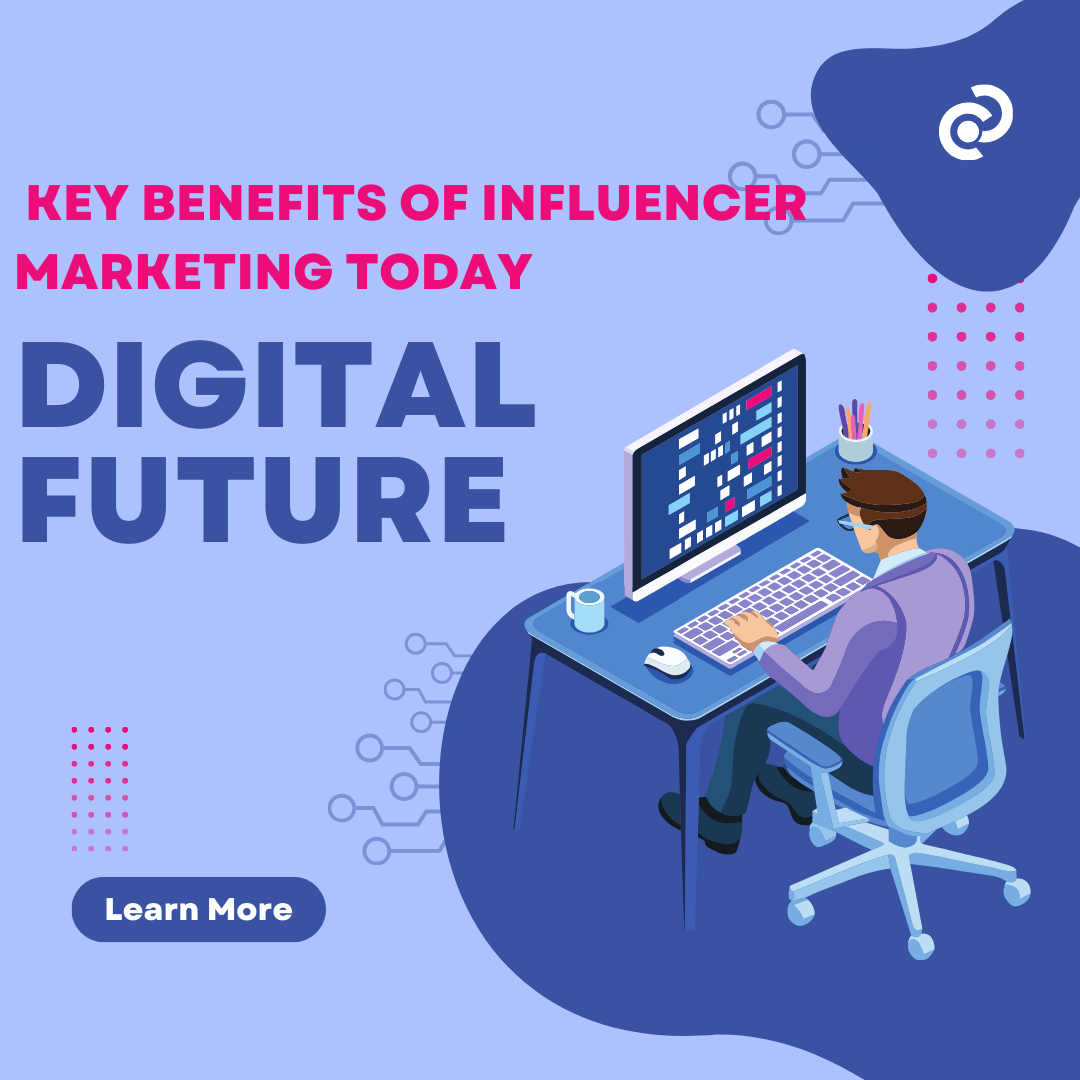In the fast-paced digital landscape, advertising strategies are continually evolving to keep pace with consumer behavior. One strategy that has emerged as a game-changer is influencer marketing. Once considered a niche tactic, influencer marketing has become a cornerstone of digital advertising, bridging the gap between brands and consumers with unparalleled authenticity. This blog explores the origins, evolution, and future potential of influencer marketing, highlighting its transformative impact on digital advertising.
What is Influencer Marketing?
Influencer marketing involves partnering with individuals who have established credibility, a substantial online following, and a deep connection with their audience. These individuals, known as influencers, promote products or services in ways that resonate with their followers. Unlike traditional advertisements, influencer marketing relies on trust and relatability, which makes these endorsements more persuasive.
Whether it’s a beauty guru sharing a skincare routine, a fitness trainer recommending supplements, or a tech enthusiast reviewing gadgets, influencers bring products to life by weaving them into their personal narratives.
The Evolution of Influencer Marketing
1. Early Days: From Celebrity Endorsements to Digital Pioneers
Before the digital boom, influencer marketing revolved around celebrity endorsements in television, print, and radio. However, these endorsements were impersonal and catered primarily to mass markets.
The emergence of social media platforms like Instagram, YouTube, and TikTok revolutionized this dynamic. Ordinary people—bloggers, vloggers, and content creators—gained massive followings by producing relatable, authentic content. Unlike traditional celebrities, these digital influencers felt more accessible, making their recommendations more trustworthy.
2. The Shift to Micro and Nano Influencers
Brands quickly realized that micro-influencers (10,000–100,000 followers) and nano-influencers (1,000–10,000 followers) often had higher engagement rates than macro-influencers or celebrities. These smaller influencers built communities based on niche interests, allowing brands to target specific demographics effectively.
Why Influencer Marketing Thrives in Digital Advertising
1. Authenticity Drives Trust
In a world where consumers are skeptical of traditional advertisements, influencers offer a sense of authenticity. Their endorsements are often perceived as genuine recommendations, not sales pitches, creating a strong bond with their followers.
2. Highly Engaged Audiences
Influencers cultivate loyal followers who actively engage with their content. This high engagement translates into greater visibility and interaction for the brands they endorse, increasing the likelihood of conversions.
3. Targeted Marketing
Unlike broad advertising campaigns, influencer marketing enables brands to target specific audiences. Whether it’s a travel blogger promoting luggage or a gaming streamer endorsing equipment, the targeted nature ensures higher ROI.
The Rise of Influencer Marketing in Digital Advertising
In the fast-paced digital landscape, advertising strategies are continually evolving to keep pace with consumer behavior. One strategy that has emerged as a game-changer is influencer marketing. Once considered a niche tactic, influencer marketing has become a cornerstone of digital advertising, bridging the gap between brands and consumers with unparalleled authenticity. This blog explores the origins, evolution, and future potential of influencer marketing, highlighting its transformative impact on digital advertising.
What is Influencer Marketing?
Influencer marketing involves partnering with individuals who have established credibility, a substantial online following, and a deep connection with their audience. These individuals, known as influencers, promote products or services in ways that resonate with their followers. Unlike traditional advertisements, influencer marketing relies on trust and relatability, which makes these endorsements more persuasive.
Whether it’s a beauty guru sharing a skincare routine, a fitness trainer recommending supplements, or a tech enthusiast reviewing gadgets, influencers bring products to life by weaving them into their personal narratives.
The Evolution of Influencer Marketing
1. Early Days: From Celebrity Endorsements to Digital Pioneers
Before the digital boom, influencer marketing revolved around celebrity endorsements in television, print, and radio. However, these endorsements were impersonal and catered primarily to mass markets.
The emergence of social media platforms like Instagram, YouTube, and TikTok revolutionized this dynamic. Ordinary people—bloggers, vloggers, and content creators—gained massive followings by producing relatable, authentic content. Unlike traditional celebrities, these digital influencers felt more accessible, making their recommendations more trustworthy.
2. The Shift to Micro and Nano Influencers
Brands quickly realized that micro-influencers (10,000–100,000 followers) and nano-influencers (1,000–10,000 followers) often had higher engagement rates than macro-influencers or celebrities. These smaller influencers built communities based on niche interests, allowing brands to target specific demographics effectively.
Why Influencer Marketing Thrives in Digital Advertising
1. Authenticity Drives Trust
In a world where consumers are skeptical of traditional advertisements, influencers offer a sense of authenticity. Their endorsements are often perceived as genuine recommendations, not sales pitches, creating a strong bond with their followers.
2. Highly Engaged Audiences
Influencers cultivate loyal followers who actively engage with their content. This high engagement translates into greater visibility and interaction for the brands they endorse, increasing the likelihood of conversions.
3. Targeted Marketing
Unlike broad advertising campaigns, influencer marketing enables brands to target specific audiences. Whether it’s a travel blogger promoting luggage or a gaming streamer endorsing equipment, the targeted nature ensures higher ROI.
4. Cost-Effectiveness
For brands with limited budgets, working with micro or nano influencers can be a cost-effective alternative to traditional advertising or celebrity endorsements. These partnerships often yield impressive results at a fraction of the cost.
5. Social Proof and FOMO
When influencers showcase products in their daily lives, they create social proof—demonstrating the product’s value in real-world scenarios. This often triggers FOMO (Fear of Missing Out), motivating followers to purchase.
The Challenges of Influencer Marketing
Despite its advantages, influencer marketing is not without challenges:
1. Fake Followers and Engagement
The rise of bots and fake accounts has led to inflated follower counts and engagement metrics. Brands must vet influencers carefully to ensure authentic reach.
2. Oversaturation
The influencer space is becoming increasingly crowded. Audiences may feel overwhelmed by excessive promotional content, leading to diminished trust.
3. Maintaining Authenticity
Overly scripted or forced endorsements can alienate an influencer’s audience, undermining the campaign’s effectiveness. Striking a balance between brand messaging and authenticity is crucial.
4. Regulatory Compliance
Governments and social media platforms have introduced guidelines to ensure transparency in sponsored content. Influencers and brands must disclose paid partnerships to avoid legal and ethical issues.



